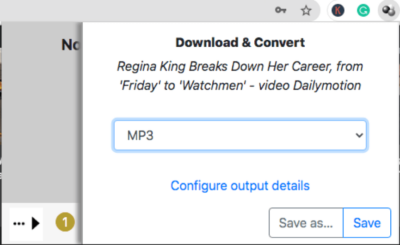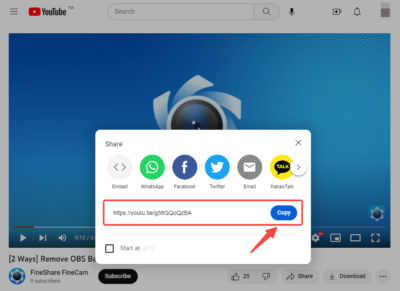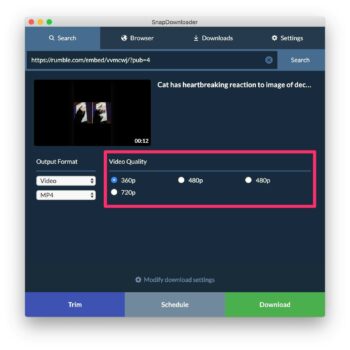Shooting in RAW or JPEG format is a decision that every photographer must make. Both formats have their advantages and disadvantages, and the choice depends on your personal preferences, shooting conditions, and post-processing needs.
RAW files contain all of the data captured by your camera's sensor, making them ideal for photographers who want complete control over the editing process. They offer greater flexibility, more control over image quality, and non-destructive editing, but they also require post-processing, have larger file sizes, and longer processing times.
JPEG files are processed by the camera's software and have in-camera adjustments applied to them, making them more convenient for photographers who need to shoot and store a large number of images. They offer smaller file sizes, instant results, and faster shooting speeds, but they also have limited flexibility, less control over image quality, and require more processing if you want to make significant adjustments to your images.
In this way, understanding the pros and cons of shooting in RAW vs. JPEG can help you choose the format that is best suited to your needs and preferences, depending on the type of photography you do, your desired level of control over your images, and your post-processing workflow.
Shooting in RAW and JPEG are two different image file formats used in digital photography. Each has its own advantages and disadvantages, and the choice between the two depends on the photographer's needs and preferences.
Pros of Shooting in RAW:
More Control Over Image Quality: When shooting in RAW, you have more control over image quality because RAW files capture all the data from the camera's sensor, including the full range of colors, brightness levels, and detail. This allows you to make adjustments to the image during post-processing without losing quality, as you have access to all the original data captured by the sensor.
For example, if an image is underexposed, you can adjust the exposure in post-processing without losing detail in the highlights or shadows.Similarly, you can adjust the white balance, contrast, and saturation without affecting the image quality.In contrast, shooting in JPEG format compresses the data captured by the sensor and discards some of it to reduce the file size.
This means that you have less control over image quality, as some of the original data is lost during the compression process. If you make adjustments to the image during post-processing, there is a greater risk of losing detail, causing image degradation, or introducing artifacts in the image.
Non-Destructive Editing:When you edit a RAW file, the changes you make are non-destructive, meaning that they do not permanently alter the original file. Instead, the changes are stored separately from the original file as metadata. This allows you to experiment with different adjustments without losing the original data or damaging the file.Non-destructive editing is a significant advantage of shooting in RAW because it gives you greater flexibility and creative control over your images.
You can make adjustments to exposure, white balance, contrast, saturation, and other settings, and see how each change affects the image without permanently altering the original file.You can also revisit your editing decisions later and make further adjustments if needed.In contrast, when you edit a JPEG file, the changes you make are destructive, meaning that they permanently alter the original data.
This means that you cannot undo or revert your changes later, and any further adjustments you make will be based on the altered data. This limits your flexibility and creative control over the image and makes it difficult to achieve the same level of precision and detail as with non-destructive RAW editing.
Greater Flexibility:Shooting in RAW format provides greater flexibility than shooting in JPEG because RAW files contain more information and detail than JPEG files. This additional information allows you to make more significant adjustments to the image during post-processing without compromising the image quality.For example, RAW files have a higher dynamic range than JPEG files, which means that they can capture more detail in bright highlights and dark shadows.
This allows you to adjust the exposure and recover detail in areas that may be overexposed or underexposed, without affecting the overall image quality.RAW files also contain more color information than JPEG files, which means you can make more accurate and precise adjustments to the color balance and saturation.In contrast, JPEG files are compressed and have a limited range of color and brightness information, which means that you have less flexibility to make significant adjustments during post-processing.
If you try to adjust the exposure or color balance too much, you may end up introducing artifacts or noise into the image, which can degrade the image quality.Overall, shooting in RAW provides greater flexibility and control over the final image, allowing you to make more significant adjustments to the image during post-processing while maintaining the image quality.
Also Read This: How to Submit Airshow Photos to iStock: A Comprehensive Guide
Cons of Shooting in RAW:
-
Also Read This: Is Getty Images Images Safe? Ensuring Trust and Legitimacy in Your Stock Photography
File Large Sizes:
One of the disadvantages of shooting in RAW format is that RAW files have larger file sizes than JPEG files. Because RAW files capture all the data from the camera's sensor, they contain a lot more information than JPEG files, which are compressed and discard some of the data to reduce file size.
The larger file size of RAW files can be an issue for photographers who shoot in high volume or who have limited storage capacity on their devices. RAW files take up more space on your memory card and hard drive, which means that you can store fewer images on your device compared to shooting in JPEG format.
Additionally, larger file sizes mean that it takes longer to transfer, process, and edit the images, which can be a problem if you are working on a tight deadline or need to share the images quickly.
In contrast, JPEG files have smaller file sizes, which makes them more convenient for photographers who need to shoot and share images quickly and easily without worrying about file size. JPEG files can be easily uploaded to websites and social media platforms without needing to be resized or compressed, which makes them a better choice for photographers who want to share their work quickly and efficiently.
-
Also Read This: Download Bilibili Video Without Any Hassle
Longer Processing Time:
Another potential disadvantage of shooting in RAW format is that it can take longer to process the images during post-production than JPEG files. Because RAW files capture all the data from the camera's sensor, they require more processing power and time to make adjustments to the image compared to JPEG files.
The larger file size of RAW files also means that they take longer to transfer from the camera to the computer or other devices, which can add to the overall processing time.
Additionally, working with RAW files requires specialized software that is designed to handle the unique characteristics of RAW files. This software can be more expensive and may require additional training to use effectively.
In contrast, JPEG files are much easier to work with and can be processed quickly using basic image editing software. JPEG files can be opened and edited using most image editing software, including free programs like Adobe Photoshop Express, which makes them more accessible to photographers who do not have specialized software or training.
Overall, the longer processing time required to work with RAW files may be a disadvantage for photographers who need to process images quickly or who have limited processing power on their computers or other devices.
-
Also Read This: Team Departure: Leaving a Team on Microsoft Teams
Requires Post-Processing:
Shooting in RAW format requires post-processing to achieve the best results. Unlike JPEG files, RAW files are not processed by the camera's software and do not have any in-camera adjustments applied to them. This means that RAW files can look flat and lack the vivid colors and sharpness that you may be used to seeing in JPEG files.
To achieve the best results from a RAW file, you need to open it in specialized software, such as Adobe Lightroom or Capture One, and make adjustments to the exposure, color balance, sharpness, and other settings. This requires a level of technical knowledge and skill to achieve the desired results.
Post-processing RAW files can be time-consuming, especially if you have a large number of images to process. It also requires more storage space on your computer or other devices to store the RAW files and the post-processed images.
In contrast, JPEG files are already processed by the camera's software and have in-camera adjustments applied to them. This means that they are ready to be used straight out of the camera without any post-processing required. This can be a significant advantage for photographers who need to shoot and share images quickly without the need for post-processing.
Overall, shooting in RAW format requires post-processing to achieve the best results, which can be time-consuming and require technical knowledge and skill. In contrast, JPEG files are ready to be used straight out of the camera, which makes them a better choice for photographers who need to shoot and share images quickly without the need for post-processing.
Also Read This: Planner Plan Purge: Deleting a Microsoft Planner Plan
Pros of Shooting in JPEG:
-
Also Read This: Find Out How to Talk Like TED and Become a Better Speaker
Smaller File Sizes:
One of the advantages of shooting in JPEG format is that JPEG files have smaller file sizes than RAW files. JPEG files are compressed and discard some of the data to reduce file size, which makes them more convenient for photographers who need to shoot and store a large number of images.
The smaller file size of JPEG files makes them easier to transfer and store than RAW files. They take up less space on memory cards and hard drives, which means that you can store more images on your device compared to shooting in RAW format. They also transfer more quickly, which can be an advantage if you need to share your images quickly or upload them to the internet.
In addition, JPEG files can be edited quickly and easily using most image editing software. Because they are already processed by the camera's software and have in-camera adjustments applied to them, they require less post-processing than RAW files. This means that you can make basic adjustments to the exposure, color balance, and other settings quickly and easily, without the need for specialized software or technical knowledge.
Overall, shooting in JPEG format has the advantage of smaller file sizes, which makes it more convenient for photographers who need to shoot and store a large number of images. They are also quicker and easier to edit, which can be an advantage if you need to make basic adjustments to your images quickly and easily.
-
Also Read This: Easiest Facebook Reel Download Method That Lets You Save Your Favorite Videos in Seconds!
Instant Results:
One of the advantages of shooting in JPEG format is that you can see the results of your images immediately after shooting them. Because JPEG files are processed by the camera's software and have in-camera adjustments applied to them, they look ready to use straight out of the camera.
This means that you can quickly review your images on the camera's LCD screen and make adjustments to your settings as needed to get the results you want. You can also share your images with others immediately, without the need for post-processing.
In contrast, shooting in RAW format requires post-processing to achieve the best results. RAW files look flat and lack the vivid colors and sharpness that you may be used to seeing in JPEG files. This means that you can't see the final results of your images immediately after shooting them.
To see the final results of your images, you need to open them in specialized software and make adjustments to the exposure, color balance, sharpness, and other settings. This can be time-consuming and requires technical knowledge and skill.
Overall, shooting in JPEG format has the advantage of instant results, which makes it more convenient for photographers who need to review and share their images immediately after shooting them. In contrast, shooting in RAW format requires post-processing to achieve the best results, which can be time-consuming and require technical knowledge and skill.
-
Also Read This: How Much is Adobe Stock Images in 2023?
Faster Shooting Speed:
One of the advantages of shooting in JPEG format is that it allows for faster shooting speeds. Because JPEG files are smaller than RAW files, they require less time to write to the memory card, which means that you can shoot more images in quick succession without experiencing buffering or slowdowns.
This can be an advantage for photographers who need to capture fast-paced action, such as sports or wildlife photography, where the ability to shoot multiple images quickly can make the difference between capturing the perfect shot or missing the moment.
In addition, shooting in JPEG format allows you to use burst mode or continuous shooting mode on your camera, which can capture multiple images in quick succession. This can be useful for capturing fast-moving subjects or creating a sequence of images for a project.
In contrast, shooting in RAW format can slow down the shooting speed of your camera, especially if you are shooting in burst mode. Because RAW files are larger and require more processing power and time to write to the memory card, your camera may experience buffering or slowdowns, which can make it difficult to capture fast-paced action.
Overall, shooting in JPEG format has the advantage of faster shooting speeds, which makes it more convenient for photographers who need to capture fast-paced action. In contrast, shooting in RAW format can slow down the shooting speed of your camera, which may make it difficult to capture fast-moving subjects.
Also Read This: Etsy Encounters: How to Follow Someone on Etsy
Cons of Shooting in JPEG:
- Limited Image Quality: JPEG files are compressed, which means that they lose some quality during the compression process. This can result in a loss of detail, color information, and dynamic range.
- Less Flexibility: JPEG files offer less flexibility when it comes to adjusting exposure, white balance, and other settings. This means that if you don't get the settings right in-camera, you may not be able to correct them during post-processing.
- Destructive Editing: JPEG files are destructive, meaning that any changes made to the image during post-processing will affect the original image, making it difficult to undo or adjust later.
Also Read This: Unblock Beats: How to Unblock SoundCloud – Regain Access Anywhere
FAQ:
Sure, I can help with some frequently asked questions on the pros and cons of shooting in RAW vs. JPEG:
Which format should I shoot in, RAW or JPEG?
The answer depends on your personal preferences and the type of photography you do. If you want complete control over the editing process and the highest possible image quality, RAW is the best option. If you need to shoot and store a large number of images quickly and want instant results, JPEG is the better option.
Is shooting in RAW format always better than JPEG?
Not necessarily. Shooting in RAW format offers greater flexibility and more control over the editing process, but it also requires more post-processing and has larger file sizes. JPEG is more convenient and offers smaller file sizes, instant results, and faster shooting speeds.
Do all cameras support the RAW format?
No, not all cameras support the RAW format. Most DSLR and mirrorless cameras support RAW format, but some compact and point-and-shoot cameras may not have this feature.
How much storage space do RAW files take up compared to JPEG files?
RAW files are much larger than JPEG files, typically 2-3 times the size. This means that they require more storage space on your memory card and hard drive.
Can I convert a JPEG file to a RAW file?
No, you cannot convert a JPEG file to a RAW file. Once an image is saved as a JPEG file, it loses the original raw data captured by the camera's sensor.
Conclusion;
In conclusion, shooting in RAW offers greater control over image quality and more flexibility in post-processing, while shooting in JPEG offers faster shooting speed and instant results without the need for post-processing. The choice between the two depends on the photographer's needs and preferences, as well as the situation they are shooting in. For professional and serious amateur photographers, RAW is often the preferred option, while JPEG is more suitable for casual and everyday photography.













